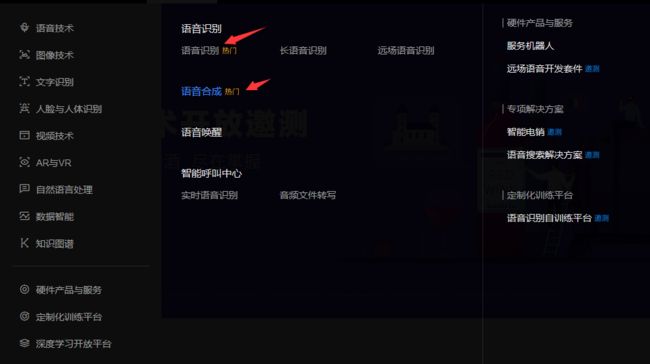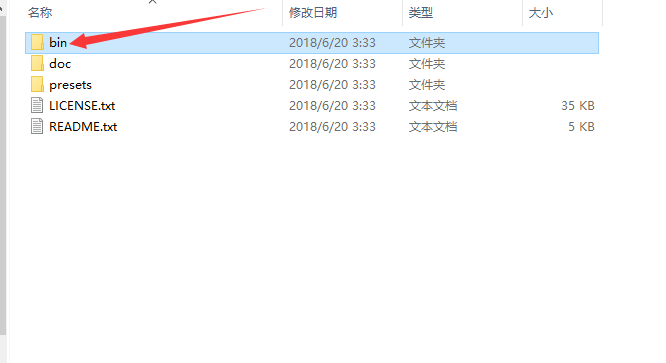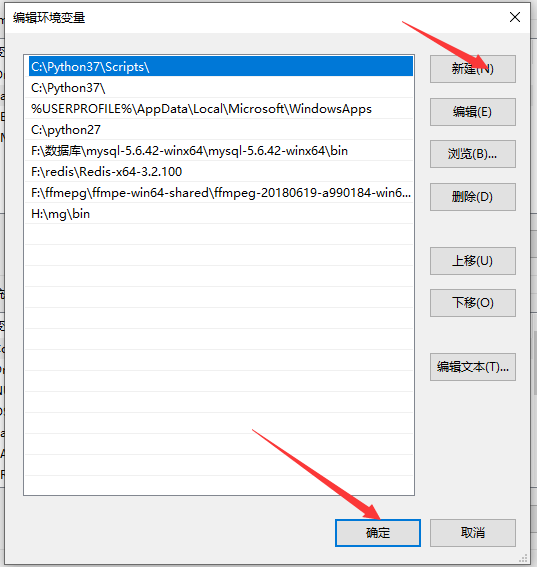- 生成式人工智能实战 | 像素卷积神经网络(PixelCNN)
盼小辉丶
生成式人工智能实战150讲深度学习生成模型aigc
生成式人工智能实战|像素卷积神经网络0.前言1.PixelCNN工作原理1.1掩码卷积层1.2残差块2.PixelCNN分析3.使用混合分布改进PixelCNN3.1模型构建3.2模型训练0.前言像素卷积神经网络(PixelConvolutionalNeuralNetwork,PixelCNN)是于2016年提出的一种图像生成模型,其根据前面的像素预测下一个像素的概率来逐像素地生成图像,模型可以通
- Python爬虫【二十四章】分布式爬虫架构实战:Scrapy-Redis亿级数据抓取方案设计
程序员_CLUB
Python入门到进阶python爬虫分布式
目录一、背景:单机爬虫的五大瓶颈二、Scrapy-Redis架构深度解析1.架构拓扑图2.核心组件对比三、环境搭建与核心配置1.基础环境部署2.Scrapy项目配置四、分布式爬虫核心实现1.改造原生Spider2.布隆过滤器集成五、五大性能优化策略1.动态优先级调整2.智能限速策略3.连接池优化4.数据分片存储5.心跳监控系统六、实战:新闻聚合平台数据抓取1.集群架构2.性能指标七、总结1.核心收
- Python 代码库之如何获取数据array最后一个元素(含demo源码)
iCloudEnd
Python代码库之如何获取数据array最后一个元素(含demo源码)源码>>>some_list=[1,2,3]>>>some_list[-1]=3#Setthelastelement>>>some_list[-2]=2#Setthesecondtolastelement>>>some_list[1,2,3]更多精彩代码请关注我的专栏reportlab教程和源码大全python源码大全Sqli
- Python,Rust开发关停大脑APP
Geeker-2025
pythonrust
要关停名为“大脑”的APP,具体实现方式取决于APP的运行环境和架构。以下是针对不同场景的Python和Rust解决方案:---###**场景1:终止本地进程(适合桌面/服务端应用)**####Python方案(使用`psutil`库)```pythonimportpsutildefstop_brain_app():target_name="brain_app"#替换为实际进程名forprocin
- Python,Java,C++开发磁悬浮原理与技术实操APP
Geeker-2025
pythonjavac++
#磁悬浮原理与技术实操APP技术方案基于Python、Java和C++开发的磁悬浮原理学习与应用APP,结合理论教学与实操模拟:##系统架构设计```mermaidgraphTDA[跨平台客户端-C++/Qt]-->|API调用|B[后端服务-Java/Spring]B-->C[磁悬浮模拟引擎-Python]B-->D[硬件控制接口]C-->E[物理模型计算]D-->F[磁悬浮套件]A-->G[3
- Python,C++开发电学/动力学与发明创造APP
#电学/动力学与发明创造APP-Python与C++集成解决方案##系统架构设计```mermaidgraphTDA[用户界面-Qt/PyQt]-->B[应用逻辑层-Python]B-->C[核心引擎-C++]C-->D[硬件接口]C-->E[物理引擎]B-->F[3D可视化]F-->G[OpenGL/Vulkan]```##技术栈分工|组件|技术|功能||------|------|------
- Python,Go开发光电效应与日常应用APP
Geeker-2025
pythongolang
以下是一个基于Python与Go开发的光电效应科普与应用APP的完整技术方案,结合了物理原理模拟、实时数据处理及生活场景应用,参考了工业级开发实践(如光电实验数据处理和能源设备控制):---###一、系统架构设计```mermaidgraphLRA[Go微服务层]-->B[Python科学计算层]A-->C[数据库/物联网]B-->D[硬件接口]D-->E[传感器/实验设备]subgraph前端A
- Python,Go are applicated to develop the app “Star travel and your preparation”
为了开发“星际旅行准备”应用(**StarTravelandYourPreparation**),结合**Python**和**Go**的技术优势,可设计如下分层架构,融合深空导航、生命维持系统(LSS)优化与跨星域资源管理功能:---###**1.核心架构设计**####**(1)星际导航引擎(Go)**-**角色**:实时多维空间路径规划与异常规避-**实现**:-**曲速走廊计算**:基于A
- Python SSTI漏洞原理与基础利用以及Fenjing的使用教程
cba尼里托圣
python网络web安全
文章目录一、Python类与对象模型基础二、魔术方法的作用与利用价值1.__class__魔术方法2.__bases__与__mro__魔术方法3.__subclasses__()魔术方法4.__init__魔术方法5.__globals__魔术方法三、魔术方法链的构建与利用1.漏洞验证2.获取类对象3.定位到object基类4.遍历object的子类5.定位危险类6.获取全局变量空间7.执行命令
- 分布式爬虫:设计一个分布式爬虫架构来抓取大规模数据
Python爬虫项目
2025年爬虫实战项目分布式爬虫架构开发语言redis测试工具python
✨引言随着互联网信息的爆炸式增长,单机爬虫面对大规模网站数据抓取显得力不从心。特别是爬取新闻、商品、社交平台等网站时,经常遇到响应慢、IP被封等问题。为了解决这些问题,分布式爬虫系统应运而生。在本文中,我们将手把手带你打造一个基于Scrapy+Redis+Celery+FastAPI+Docker的现代分布式爬虫架构,实现任务调度、去重控制、分布式抓取与结果存储。本文代码均基于Python3.10
- Python医疗大数据实战:基于Scrapy-Redis的医院评价数据分布式爬虫设计与实现
Python爬虫项目
python开发语言爬虫seleniumscrapy
摘要本文将详细介绍如何使用Python构建一个高效的医院评价数据爬虫系统。我们将从爬虫基础讲起,逐步深入到分布式爬虫架构设计,使用Scrapy框架结合Redis实现分布式爬取,并采用最新的反反爬技术确保数据采集的稳定性。文章包含完整的代码实现、性能优化方案以及数据处理方法,帮助读者掌握医疗大数据采集的核心技术。关键词:Python爬虫、Scrapy-Redis、分布式爬虫、医疗大数据、反反爬技术1
- Python,C++开发磁流体研究以及应用APP
Geeker-2025
pythonc++
#Python与C++开发磁流体研究与应用APP方案以下是一个结合Python与C++的磁流体(MHD)研究与应用APP的完整技术方案,融合了高性能计算、实时仿真和工业应用场景:##系统架构设计```mermaidgraphTDA[用户界面层]-->B[Python应用层]B-->C[C++核心计算层]C-->D[硬件接口层]D-->E[实验设备/传感器]subgraph前端A1[桌面端-PyQt
- 【Python】socket
宅男很神经
python开发语言
第一章:网络通信基石——深入理解OSI与TCP/IP模型在深入探究Pythonsocket模块之前,我们必须首先建立对网络通信底层原理的深刻理解。socket作为操作系统提供的低级网络接口,其行为和功能直接映射着网络协议栈的各个层次。因此,对OSI(开放系统互连)模型和TCP/IP模型的透彻分析,是理解socket操作精髓的先决条件。1.1网络通信的起源与核心概念网络通信的本质是数据在不同物理位置
- 安装python后如何安装numpy_如何简单安装NumPy与SciPy
2015-12-27回答numpy是一个定义了数值数组和矩阵类型和它们的基本运算的语言扩展。scipy是一种使用numpy来做高等数学、信号处理、优化、统计和许多其它科学任务的语言扩展。学习这两个工具的话,官方有很详细的文档和教程来帮助入门:我是传送门另外,还有一本书《numpyandscipy》,很薄,才67页:我是传送门如何安装numpy和scipy之所以写这篇文章主要是因为scipy官网貌似
- Python 中 sys 库的全面解析与实战应用
二向箔reverse
服务器python
在Python的众多标准库中,sys库占据着举足轻重的地位。它与Python解释器紧密交互,为开发者提供了访问解释器内部信息和控制解释器行为的强大能力。无论是命令行参数处理、系统环境配置,还是程序退出控制,sys库都能大显身手。本文将带您深入探索sys库的常用功能,通过丰富的实例讲解,助您轻松掌握其使用技巧。sys库的基础认知sys库是Python的内置标准库,无需额外安装,只需通过imports
- python环境安装jupyter
爱分享的胖头鱼
02.Python(基础知识)jupyteridepythonpython虚拟环境
安装完毕之后下一步可以参考:配置jupyter的启动路径-CSDN博客1前提条件:python环境系统:win10python:本地已经有python,可以查看本地的python版本:C:\Users\PC>python--versionPython3.8.102安装jupyter并启动安装jupyterC:\Users\PC>pipinstalljupyternotebookCollecting
- python爬虫之获取渲染代码
获取渲染后的网页代码过get()方法获取浏览器中的网页资源后,浏览器将自动渲染网页源代码内容,并生成渲染后的的时使用page_source()方法即可获取渲染后的网页代码。示例代码:'''获取渲染后的网页代码'''fromseleniumimportwebdriverfromselenium.webdriver.chrome.optionsimportOptionschrome_options=O
- 最全2025年AI开发工具深度对比分析:程序员的智能编程助手全指南 最新功能、定价策略、使用体验和适用场景 Cursor、GitHub Copilot、Claude 4、Claude Code
wei佳
人工智能aiAI编程webstormideavscode
2025年AI开发工具深度对比分析:程序员的智能编程助手全指南引言(不想看文字可直接看后面图表对比)随着人工智能技术的飞速发展,AI编程助手已经从概念走向现实,成为现代软件开发不可或缺的工具。2025年上半年,AI编程工具市场迎来了前所未有的变革,各大厂商纷纷推出革命性功能,从简单的代码补全演进为能够理解完整项目上下文的智能编程代理。据最新市场研究显示,全球AI代码工具市场在2024年达到67亿美
- 学习笔记(66):Python入门教程-datetime模块时间运算
顾子宇
研发管理python编程语言Python小猿圈Python入门教程
立即学习:https://edu.csdn.net/course/play/24459/296363?utm_source=blogtoedudatetime模块:datetime.date:表示日期的类,常用属性有year,month,daydatetime.time:表示时间的类,常用的属性有hour,minute,second,microseconddatetime.datetime:表示日
- 掌握reStructuredText:编写与格式化文档的技巧
本文还有配套的精品资源,点击获取简介:reStructuredText(rST)是一种轻量级文本标记语言,广泛用于Python社区的文档编写,特别是借助Sphinx文档生成器。本文介绍了rST的基础语法和高级特性,包括段落、标题、强调、代码、列表、引用、链接、图像、表格、章节组织、自定义角色和指令、包含和排除文件以及源代码高亮。同时,探讨了Sphinx与rST结合使用的高级功能,包括扩展、配置和构
- [Python] -项目实战5- Python 实现简易学生成绩管理系统
踏雪无痕老爷子
Pythonpython开发语言
一、为什么做这个项目?学习OOP和GUI基础:通过类与对象封装学生信息,熟悉Tkinter构建窗口、表格、按钮等。实用性强:可添加、查询、删除、修改学生记录,是常见管理系统的基本功能。扩展性好:后续可以接入数据库、图表展示、权限控制等功能。二、核心技术与工具tkinter:Python内置的桌面GUI库,用于构建窗口界面、表单和按钮。sqlite3:轻量级关系数据库,适合小型持久化存储,无需部署服
- [Python] -项目实战类3- 用Python制作一个记事本应用
踏雪无痕老爷子
Python开发语言python
一、为什么要自己写记事本?提升GUI编程能力:通过构建窗口、菜单、文本区等组件,理解基本控件的使用。实用工具:自定义功能、更轻量、更符合个人使用习惯。实验与扩展空间大:方便加入特色功能,如自动保存、代码高亮、插件等。二、准备工作✅安装Python(建议Python 3.7+)。无需安装第三方库,tkinter是Python标准库的一部分。用于构建UI界面。sudoaptinstallpython3
- [Python] -项目实战4- 利用Python进行Excel批量处理
踏雪无痕老爷子
Pythonpythonexcel开发语言
一、为什么要批量处理Excel文件?节省时间:人工对数十、数百个Excel文件重复操作不现实,Python批量处理一次搞定。保证一致性:统一格式、统一操作,避免手动误差。易于集成:可嵌入日常自动化流程,支持定时和触发执行。二、常用库及选型建议库作用优势局限pandas读取/清洗/分析Excel数据语法简
- python中的keys方法
m0_58134286
pythondict
d.keys()1.作用:获取字典d中的所有key值,返回值是一个对象2.例子:dict1=dict(one=1,two=2)print(dict1.keys())//输出结果为:dict_keys(["one","two"])3.思考:若何将返回值转换成列表print(list(dict1.keys())//输出结果为:["one","two"]
- bash方式启动模型训练
BILLY BILLY
深度学习基础开发必备工具自动驾驶
export\PATHPYTHONPATH=/workspace/mmlab/mmdetection/:/workspace/mmlab/mmsegmentation/:/workspace/mmlab/mmdeploy/:${env:PYTHONPATH}\CUDA_VISIBLE_DEVICES=0\DATA_ROOT_1=/mnt/data/…/\DATA_ROOT_2=/mnt/data/
- Python基础(十四): 函数作用域
伯wen
一、基本概念1、变量的作用域变量的作用范围:可操作范围Python是静态作用域,也就是说在Python中,变量的作用域源于它在代码中的位置,在不同的位置,可能有不同的命名空间2、命名空间命名空间是作用域的体现形式表示变量不同的具体的操作范围3、Python-LEGBL-Local:函数内的命名空间作用范围:当前整个函数体deftest():a=10print(a)test()#打印:10a的作用范
- 爬虫实战案例(两个)
AI 嗯啦
爬虫
该博客展示两个简单的爬虫实战案例,一个是从人民邮电出版社上爬取其中一个分类的全部图书信息,另一个是在苏宁易购上爬取某个商品的好评和差评,用两个简单的案例讲解爬虫在实际情况下的运作流程一、获取图书信息需求:统计人民邯电出版社官网中与关键词“python”有关的全部图书,包含图书名、价格、作者名等信息,并将获取的信息写入“Excel图书汇总,txt”文件中。流程:配置浏览器并打开目标网站搜索"Pyth
- Python高效编程技术大全:从解释器到异步编程
竹石文化传播有限公司
本文还有配套的精品资源,点击获取简介:《Python高性能编程技术》旨在指导开发者深入理解Python的性能优化方法。本书涵盖了从解释器机制、数据结构和内置函数的优化,到使用Numpy、Pandas、多线程和多进程进行数值计算和数据处理,再到并发编程和性能分析等全面技术,帮助开发者提升代码执行效率和处理各种性能挑战。1.Python解释器性能分析Python作为一门解释型语言,其性能受到解释器行为
- Python day15
@浙大疏锦行Pythonday15.内容:复习日本周主要的内容是一些常见的机器学习流程以及其中的部分内容标签编码以及连续特征的处理:归一化和正态化等。图像的绘制:热力图、Shap图等的绘制超参数优化算法:网格搜索、贝叶斯以及启发式算法模拟退火、遗传算法等不平衡数据集的处理:过采样以及欠采样。
- Python Day16
赵英英俊
Python训练python
@浙大疏锦行Pythonday16内容:numpy数组的创建以及相关操作numpy的索引理解SHAP值代码:importnumpyasnpa=np.array([[1,2],[3,4],[5,6]])b=np.array([[7,8],[9,10],[11,12]])效果:
- PHP如何实现二维数组排序?
IT独行者
二维数组PHP排序
二维数组在PHP开发中经常遇到,但是他的排序就不如一维数组那样用内置函数来的方便了,(一维数组排序可以参考本站另一篇文章【PHP中数组排序函数详解汇总】)。二维数组的排序需要我们自己写函数处理了,这里UncleToo给大家分享一个PHP二维数组排序的函数:
代码:
functionarray_sort($arr,$keys,$type='asc'){
$keysvalue= $new_arr
- 【Hadoop十七】HDFS HA配置
bit1129
hadoop
基于Zookeeper的HDFS HA配置主要涉及两个文件,core-site和hdfs-site.xml。
测试环境有三台
hadoop.master
hadoop.slave1
hadoop.slave2
hadoop.master包含的组件NameNode, JournalNode, Zookeeper,DFSZKFailoverController
- 由wsdl生成的java vo类不适合做普通java vo
darrenzhu
VOwsdlwebservicerpc
开发java webservice项目时,如果我们通过SOAP协议来输入输出,我们会利用工具从wsdl文件生成webservice的client端类,但是这里面生成的java data model类却不适合做为项目中的普通java vo类来使用,当然有一中情况例外,如果这个自动生成的类里面的properties都是基本数据类型,就没问题,但是如果有集合类,就不行。原因如下:
1)使用了集合如Li
- JAVA海量数据处理之二(BitMap)
周凡杨
java算法bitmapbitset数据
路漫漫其修远兮,吾将上下而求索。想要更快,就要深入挖掘 JAVA 基础的数据结构,从来分析出所编写的 JAVA 代码为什么把内存耗尽,思考有什么办法可以节省内存呢? 啊哈!算法。这里采用了 BitMap 思想。
首先来看一个实验:
指定 VM 参数大小: -Xms256m -Xmx540m
- java类型与数据库类型
g21121
java
很多时候我们用hibernate的时候往往并不是十分关心数据库类型和java类型的对应关心,因为大多数hbm文件是自动生成的,但有些时候诸如:数据库设计、没有生成工具、使用原始JDBC、使用mybatis(ibatIS)等等情况,就会手动的去对应数据库与java的数据类型关心,当然比较简单的数据类型即使配置错了也会很快发现问题,但有些数据类型却并不是十分常见,这就给程序员带来了很多麻烦。
&nb
- Linux命令
510888780
linux命令
系统信息
arch 显示机器的处理器架构(1)
uname -m 显示机器的处理器架构(2)
uname -r 显示正在使用的内核版本
dmidecode -q 显示硬件系统部件 - (SMBIOS / DMI)
hdparm -i /dev/hda 罗列一个磁盘的架构特性
hdparm -tT /dev/sda 在磁盘上执行测试性读取操作
cat /proc/cpuinfo 显示C
- java常用JVM参数
墙头上一根草
javajvm参数
-Xms:初始堆大小,默认为物理内存的1/64(<1GB);默认(MinHeapFreeRatio参数可以调整)空余堆内存小于40%时,JVM就会增大堆直到-Xmx的最大限制
-Xmx:最大堆大小,默认(MaxHeapFreeRatio参数可以调整)空余堆内存大于70%时,JVM会减少堆直到 -Xms的最小限制
-Xmn:新生代的内存空间大小,注意:此处的大小是(eden+ 2
- 我的spring学习笔记9-Spring使用工厂方法实例化Bean的注意点
aijuans
Spring 3
方法一:
<bean id="musicBox" class="onlyfun.caterpillar.factory.MusicBoxFactory"
factory-method="createMusicBoxStatic"></bean>
方法二:
- mysql查询性能优化之二
annan211
UNIONmysql查询优化索引优化
1 union的限制
有时mysql无法将限制条件从外层下推到内层,这使得原本能够限制部分返回结果的条件无法应用到内层
查询的优化上。
如果希望union的各个子句能够根据limit只取部分结果集,或者希望能够先排好序在
合并结果集的话,就需要在union的各个子句中分别使用这些子句。
例如 想将两个子查询结果联合起来,然后再取前20条记录,那么mys
- 数据的备份与恢复
百合不是茶
oraclesql数据恢复数据备份
数据的备份与恢复的方式有: 表,方案 ,数据库;
数据的备份:
导出到的常见命令;
参数 说明
USERID 确定执行导出实用程序的用户名和口令
BUFFER 确定导出数据时所使用的缓冲区大小,其大小用字节表示
FILE 指定导出的二进制文
- 线程组
bijian1013
java多线程threadjava多线程线程组
有些程序包含了相当数量的线程。这时,如果按照线程的功能将他们分成不同的类别将很有用。
线程组可以用来同时对一组线程进行操作。
创建线程组:ThreadGroup g = new ThreadGroup(groupName);
&nbs
- top命令找到占用CPU最高的java线程
bijian1013
javalinuxtop
上次分析系统中占用CPU高的问题,得到一些使用Java自身调试工具的经验,与大家分享。 (1)使用top命令找出占用cpu最高的JAVA进程PID:28174 (2)如下命令找出占用cpu最高的线程
top -Hp 28174 -d 1 -n 1
32694 root 20 0 3249m 2.0g 11m S 2 6.4 3:31.12 java
- 【持久化框架MyBatis3四】MyBatis3一对一关联查询
bit1129
Mybatis3
当两个实体具有1对1的对应关系时,可以使用One-To-One的进行映射关联查询
One-To-One示例数据
以学生表Student和地址信息表为例,每个学生都有都有1个唯一的地址(现实中,这种对应关系是不合适的,因为人和地址是多对一的关系),这里只是演示目的
学生表
CREATE TABLE STUDENTS
(
- C/C++图片或文件的读写
bitcarter
写图片
先看代码:
/*strTmpResult是文件或图片字符串
* filePath文件需要写入的地址或路径
*/
int writeFile(std::string &strTmpResult,std::string &filePath)
{
int i,len = strTmpResult.length();
unsigned cha
- nginx自定义指定加载配置
ronin47
进入 /usr/local/nginx/conf/include 目录,创建 nginx.node.conf 文件,在里面输入如下代码:
upstream nodejs {
server 127.0.0.1:3000;
#server 127.0.0.1:3001;
keepalive 64;
}
server {
liste
- java-71-数值的整数次方.实现函数double Power(double base, int exponent),求base的exponent次方
bylijinnan
double
public class Power {
/**
*Q71-数值的整数次方
*实现函数double Power(double base, int exponent),求base的exponent次方。不需要考虑溢出。
*/
private static boolean InvalidInput=false;
public static void main(
- Android四大组件的理解
Cb123456
android四大组件的理解
分享一下,今天在Android开发文档-开发者指南中看到的:
App components are the essential building blocks of an Android
- [宇宙与计算]涡旋场计算与拓扑分析
comsci
计算
怎么阐述我这个理论呢? 。。。。。。。。。
首先: 宇宙是一个非线性的拓扑结构与涡旋轨道时空的统一体。。。。
我们要在宇宙中寻找到一个适合人类居住的行星,时间非常重要,早一个刻度和晚一个刻度,这颗行星的
- 同一个Tomcat不同Web应用之间共享会话Session
cwqcwqmax9
session
实现两个WEB之间通过session 共享数据
查看tomcat 关于 HTTP Connector 中有个emptySessionPath 其解释如下:
If set to true, all paths for session cookies will be set to /. This can be useful for portlet specification impleme
- springmvc Spring3 MVC,ajax,乱码
dashuaifu
springjquerymvcAjax
springmvc Spring3 MVC @ResponseBody返回,jquery ajax调用中文乱码问题解决
Spring3.0 MVC @ResponseBody 的作用是把返回值直接写到HTTP response body里。具体实现AnnotationMethodHandlerAdapter类handleResponseBody方法,具体实
- 搭建WAMP环境
dcj3sjt126com
wamp
这里先解释一下WAMP是什么意思。W:windows,A:Apache,M:MYSQL,P:PHP。也就是说本文说明的是在windows系统下搭建以apache做服务器、MYSQL为数据库的PHP开发环境。
工欲善其事,必须先利其器。因为笔者的系统是WinXP,所以下文指的系统均为此系统。笔者所使用的Apache版本为apache_2.2.11-
- yii2 使用raw http request
dcj3sjt126com
http
Parses a raw HTTP request using yii\helpers\Json::decode()
To enable parsing for JSON requests you can configure yii\web\Request::$parsers using this class:
'request' =&g
- Quartz-1.8.6 理论部分
eksliang
quartz
转载请出自出处:http://eksliang.iteye.com/blog/2207691 一.概述
基于Quartz-1.8.6进行学习,因为Quartz2.0以后的API发生的非常大的变化,统一采用了build模式进行构建;
什么是quartz?
答:简单的说他是一个开源的java作业调度框架,为在 Java 应用程序中进行作业调度提供了简单却强大的机制。并且还能和Sp
- 什么是POJO?
gupeng_ie
javaPOJO框架Hibernate
POJO--Plain Old Java Objects(简单的java对象)
POJO是一个简单的、正规Java对象,它不包含业务逻辑处理或持久化逻辑等,也不是JavaBean、EntityBean等,不具有任何特殊角色和不继承或不实现任何其它Java框架的类或接口。
POJO对象有时也被称为Data对象,大量应用于表现现实中的对象。如果项目中使用了Hiber
- jQuery网站顶部定时折叠广告
ini
JavaScripthtmljqueryWebcss
效果体验:http://hovertree.com/texiao/jquery/4.htmHTML文件代码:
<!DOCTYPE html>
<html xmlns="http://www.w3.org/1999/xhtml">
<head>
<title>网页顶部定时收起广告jQuery特效 - HoverTree<
- Spring boot内嵌的tomcat启动失败
kane_xie
spring boot
根据这篇guide创建了一个简单的spring boot应用,能运行且成功的访问。但移植到现有项目(基于hbase)中的时候,却报出以下错误:
SEVERE: A child container failed during start
java.util.concurrent.ExecutionException: org.apache.catalina.Lif
- leetcode: sort list
michelle_0916
Algorithmlinked listsort
Sort a linked list in O(n log n) time using constant space complexity.
====analysis=======
mergeSort for singly-linked list
====code======= /**
* Definition for sin
- nginx的安装与配置,中途遇到问题的解决
qifeifei
nginx
我使用的是ubuntu13.04系统,在安装nginx的时候遇到如下几个问题,然后找思路解决的,nginx 的下载与安装
wget http://nginx.org/download/nginx-1.0.11.tar.gz
tar zxvf nginx-1.0.11.tar.gz
./configure
make
make install
安装的时候出现
- 用枚举来处理java自定义异常
tcrct
javaenumexception
在系统开发过程中,总少不免要自己处理一些异常信息,然后将异常信息变成友好的提示返回到客户端的这样一个过程,之前都是new一个自定义的异常,当然这个所谓的自定义异常也是继承RuntimeException的,但这样往往会造成异常信息说明不一致的情况,所以就想到了用枚举来解决的办法。
1,先创建一个接口,里面有两个方法,一个是getCode, 一个是getMessage
public
- erlang supervisor分析
wudixiaotie
erlang
当我们给supervisor指定需要创建的子进程的时候,会指定M,F,A,如果是simple_one_for_one的策略的话,启动子进程的方式是supervisor:start_child(SupName, OtherArgs),这种方式可以根据调用者的需求传不同的参数给需要启动的子进程的方法。和最初的参数合并成一个数组,A ++ OtherArgs。那么这个时候就有个问题了,既然参数不一致,那






